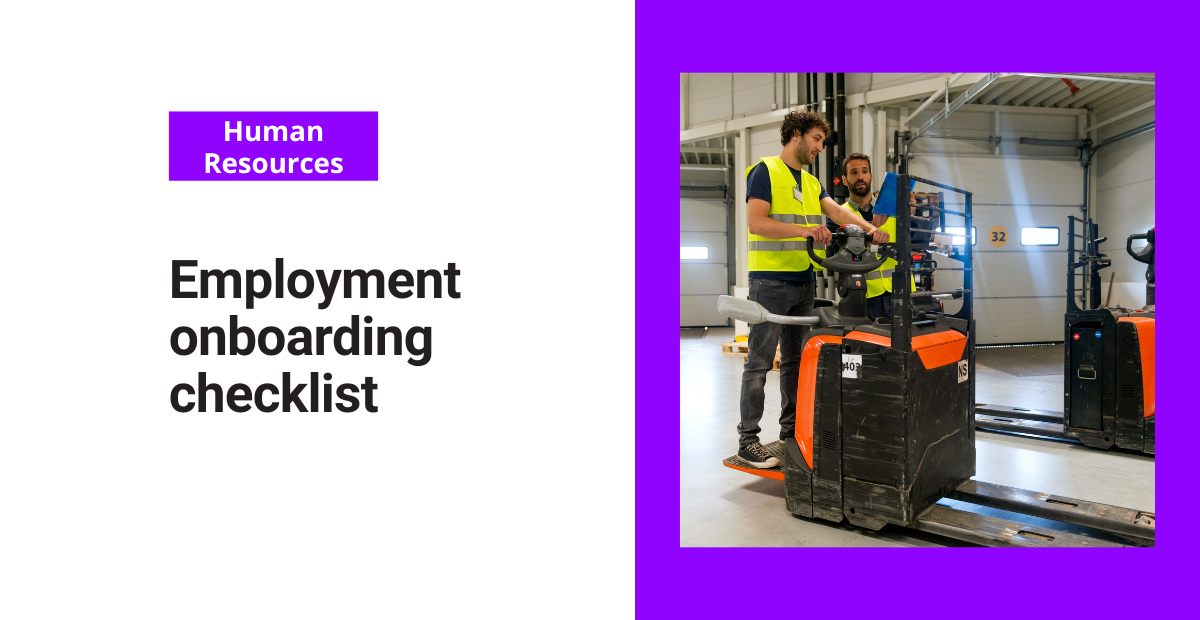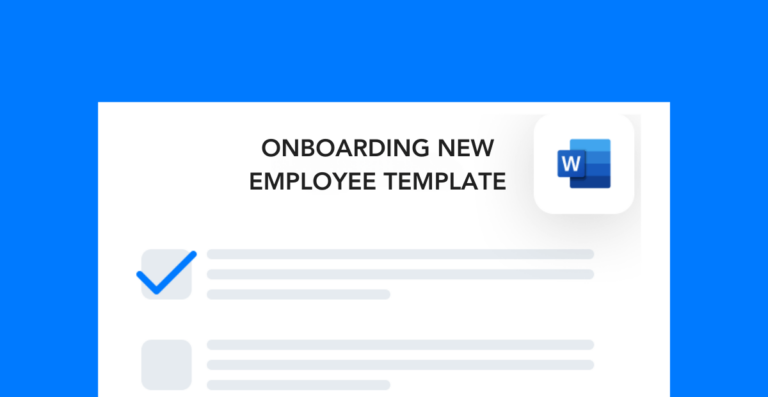On average, businesses spend thousands of dollars to hire a single employee. An estimate from the Society of Human Resources Professionals puts this figure at $4,700. From time spent recruiting to training expenses, there are many variables that factor into hiring costs.
With all that expense, the last thing you want is for new hires to leave shortly after onboarding. To avoid high turnover, you’ll need an engaging and efficient onboarding process centered on removing barriers for new employees.
This employment onboarding checklist will help you streamline and standardize your approach. You can access the template below to break down your onboarding tasks by week.
Free template!
This free employment onboarding checklist provides a simple outline for onboarding new employees to your operation.
What to send new hires
You need workers to come to their first day as prepared as possible. Here’s a list of all the things you should send them (if applicable):
- Welcome email
- Employee handbook
- Employment tax documents
- Direct deposit form
- Uniforms and other equipment
- Training materials to complete
- Important login credentials
Of course, it’s possible that you may need to add or remove items on this list depending on your industry.
Day one onboarding checklist
Once employees show up, they should be ready to go through training right away. These are the things that you should prepare for your new hires’ day one:
- Orientation presentation
- Training schedule
- Facility tour
- Company swag
- Organizational chart
When preparing for the first day, you want to really consider the best way to keep workers engaged. Some people will be overwhelmed regardless of what you do. Having a dysfunctional experience may be the tipping for those employees.
In my time as a warehouse manager, there were plenty of times when workers showed up for day one and then never came back. I’d like to think that those exits had nothing to do with me. But it’s more likely than not that some people simply had a poor onboarding experience and chose not to return as a result.
I’ve learned, however, that you can control the quality of the experience simply by being prepared. This means creating a schedule and sticking to it.
If you plan to do a lot of training on day one, make sure to break it up. A great way to do this is to give workers a tour of the facilities. This is something you can do regardless of what industry you’re in. Being able to see the building, the process, etc. can calm workers’ nerves and help them settle in faster.
Another great way to break up training sessions is to set aside time for administrative tasks.
Some companies don’t like doing this because it “wastes time” having workers do something they can do at home. In my experience, however, administrative tasks are some of the most overwhelming and time-consuming parts of onboarding new workers.
Help workers apply for benefits, set up logins, passwords, and other important accounts during onboarding. This can save your HR team time and your workers the headache of figuring it out on their own.
What to do after initial onboarding
Forward-thinking companies treat the onboarding process as an ongoing endeavor. The engagement doesn’t end once workers start contributing.
If you want to keep workers engaged, here are some continuous actions you can take:
- Schedule weekly engagement check-ins with new employees
- Test employees on their knowledge in the first few weeks of employment
- Initiate a ramp-up plan for employee productivity
- Set reminders to recognize workers’ contributions to the team
- Schedule training refreshers in advance through your LMS software
It’s your decision how long you want to focus attention on new hires. Whether your employment onboarding checklist covers the first few weeks or several months, keep engagement at the core.
Obviously, you don’t want to overwhelm HR and floor managers with too many administrative tasks. But creating a culture of routine engagement may decrease your site’s turnover rate by boosting employee satisfaction. Not only does this save money, but it also has positive implications for the long-term health and wellbeing of your team.





